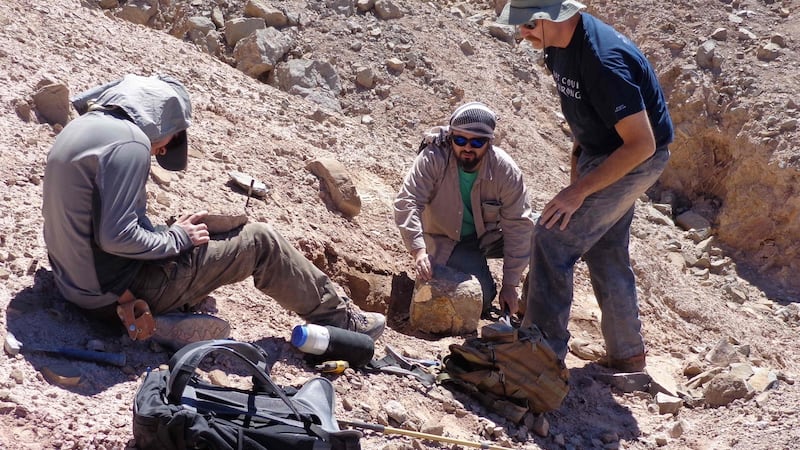Scientists in Chile’s Atacama Desert have unearthed the fossil remains of a so-called “flying dragon”.
The creature was a Jurassic-era pterosaur previously known only to the northern hemisphere. The flying reptile belonged to a group of early pterosaurs that roamed the earth 160 million years ago. It had a long, pointed tail, wings and sharp, outward pointing teeth.
The beast’s fossil remains were discovered by Osvaldo Rojas, director of the Atacama Desert Museum of Natural History and Culture, and then further investigated by scientists at the University of Chile.
Details of the discovery, the first linking such creatures to the southern hemisphere, were published in the journal Acta Palaeontologica Polonica.
“This shows the distribution of the animals in this group was wider than what was known up to now,” said Jhonatan Alarcon, a University of Chile scientist who led the investigation.
The discovery suggests close ties and possible migration between the northern and southern hemispheres at a time when most of the globe’s southerly land masses were believed to be linked in a supercontinent called Gondwana.
“There are pterosaurs of this group also in Cuba, which apparently were coastal animals, so most likely they have migrated between the north and the south or maybe they came once and stayed, we don’t know,” said Mr Alarcon.

Chile’s vast Atacama Desert, once largely submerged beneath the Pacific Ocean, is now a moonscape of sand and stone.
The region, parts of which haven’t experienced rain for decades, is a hot spot for fossil discoveries, with many remains untouched in remote areas not far beneath the desert surface. – Reuters











